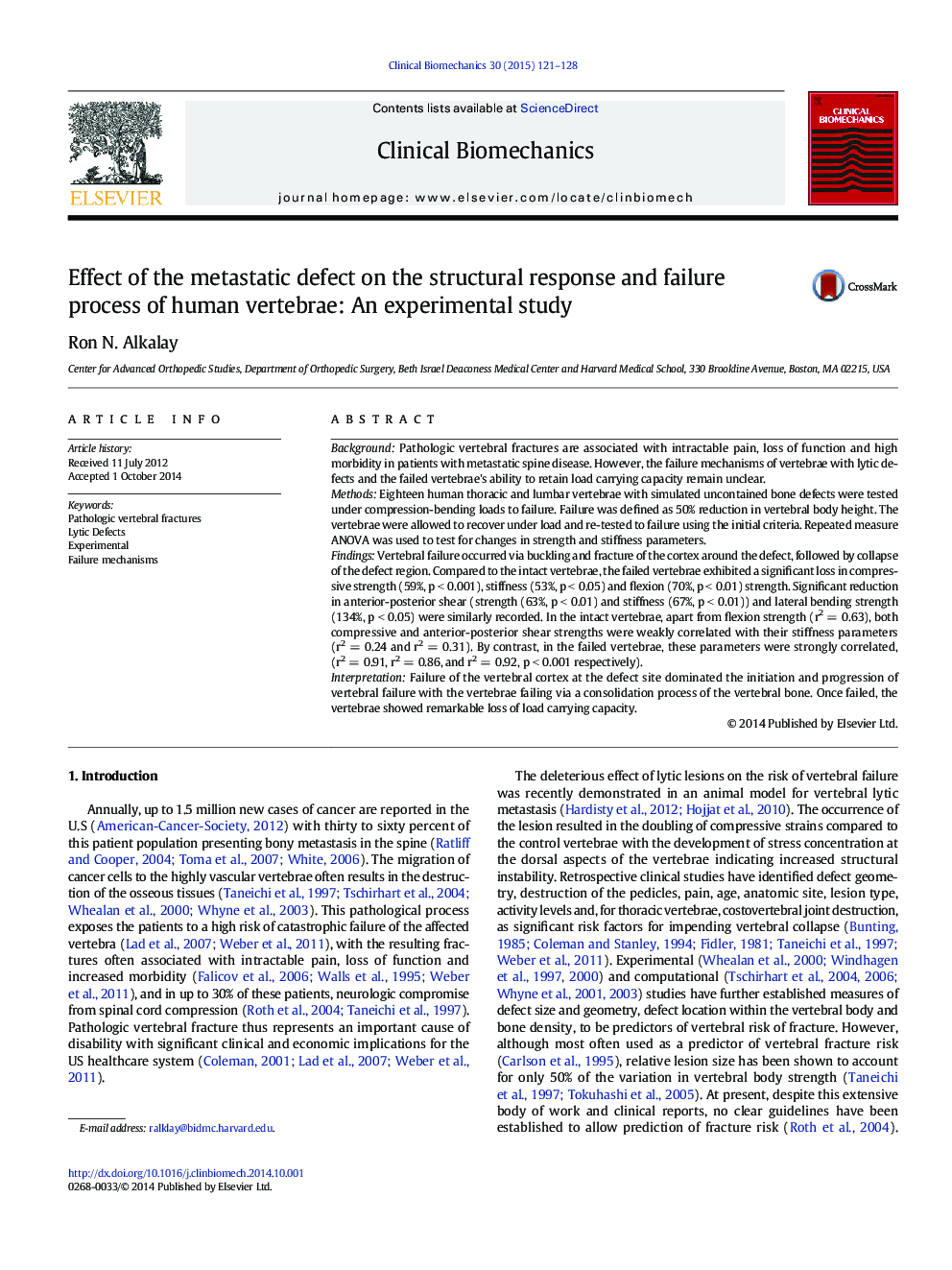| کد مقاله | کد نشریه | سال انتشار | مقاله انگلیسی | نسخه تمام متن |
|---|---|---|---|---|
| 4050318 | 1264921 | 2015 | 8 صفحه PDF | دانلود رایگان |
• Clinically relevant transcortical lytic defects were simulated in human vertebrae
• We tested the effect of the defect on the vertebral structural response and failure
• Vertebral failure exhibited a complex process initiated by buckling of the cortex
• The failed lytic vertebrae showed significant degradation of structural competence
• The extensive structural damage and lack of recovery will affect treatment success
BackgroundPathologic vertebral fractures are associated with intractable pain, loss of function and high morbidity in patients with metastatic spine disease. However, the failure mechanisms of vertebrae with lytic defects and the failed vertebrae's ability to retain load carrying capacity remain unclear.MethodsEighteen human thoracic and lumbar vertebrae with simulated uncontained bone defects were tested under compression-bending loads to failure. Failure was defined as 50% reduction in vertebral body height. The vertebrae were allowed to recover under load and re-tested to failure using the initial criteria. Repeated measure ANOVA was used to test for changes in strength and stiffness parameters.FindingsVertebral failure occurred via buckling and fracture of the cortex around the defect, followed by collapse of the defect region. Compared to the intact vertebrae, the failed vertebrae exhibited a significant loss in compressive strength (59%, p < 0.001), stiffness (53%, p < 0.05) and flexion (70%, p < 0.01) strength. Significant reduction in anterior-posterior shear (strength (63%, p < 0.01) and stiffness (67%, p < 0.01)) and lateral bending strength (134%, p < 0.05) were similarly recorded. In the intact vertebrae, apart from flexion strength (r2 = 0.63), both compressive and anterior-posterior shear strengths were weakly correlated with their stiffness parameters (r2 = 0.24 and r2 = 0.31). By contrast, in the failed vertebrae, these parameters were strongly correlated, (r2 = 0.91, r2 = 0.86, and r2 = 0.92, p < 0.001 respectively).InterpretationFailure of the vertebral cortex at the defect site dominated the initiation and progression of vertebral failure with the vertebrae failing via a consolidation process of the vertebral bone. Once failed, the vertebrae showed remarkable loss of load carrying capacity.
Journal: Clinical Biomechanics - Volume 30, Issue 2, February 2015, Pages 121–128
